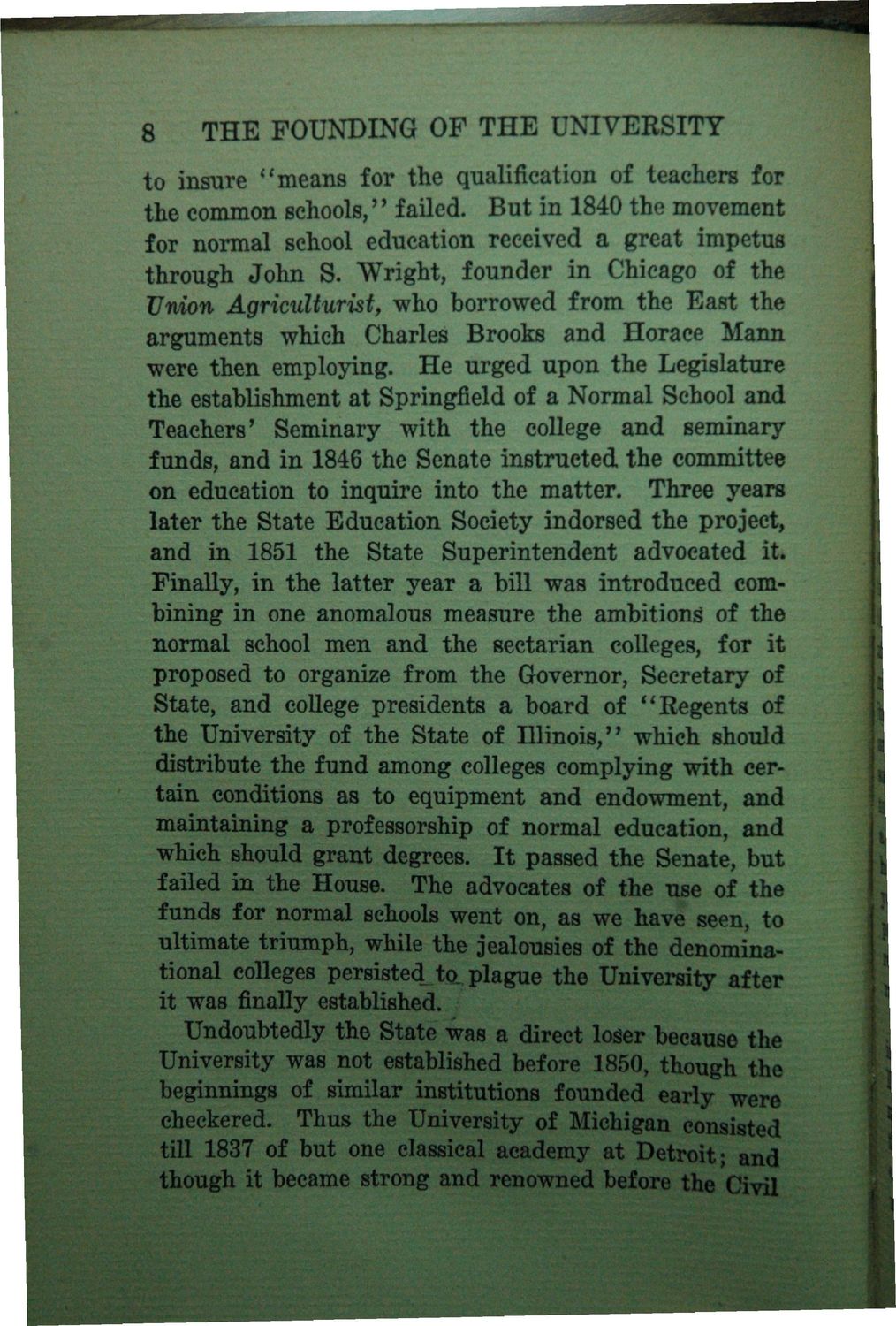| |
| |
Caption: Book - History of the University (Nevins)
This is a reduced-resolution page image for fast online browsing.

EXTRACTED TEXT FROM PAGE:
8 THE FOUNDING OF THE UNIVERSITY to insure "means for the qualification of teachers for the common schools, \ \ failed. But in 1840 the movement for normal school education received a great impetus through John S. Wright, founder in Chicago of the Union Agriculturist, who borrowed from the East the arguments which Charles Brooks and Horace Mann were then employing. He urged upon the Legislature the establishment at Springfield of a Normal School and Teachers' Seminary with the college and seminary funds, and in 1846 the Senate instructed the committee on education to inquire into the matter. Three years later the State Education Society indorsed the project, and in 1851 the State Superintendent advocated it* Finally, in the latter year a bill was introduced combining in one anomalous measure the ambitions of the normal school men and the sectarian colleges, for it proposed to organize from the Governor, Secretary of State, and college presidents a board of "Kegents of the University of the State of Illinois," which should distribute the fund among colleges complying with certain conditions as to equipment and endowment, and maintaining a professorship of normal education, and which should grant degrees. It passed the Senate, but failed in the House. The advocates of the use of the funds for normal schools went on, as we have seen, to ultimate triumph, while the jealousies of the denominational colleges persisted_to_. plague the University after it was finally established. Undoubtedly the State was a direct loser because the University was not established before 1850, though the beginnings of similar institutions founded early were checkered. Thus the University of Michigan consisted till 1837 of but one classical academy at Detroit; and though it became strong and renowned before the Civil
| |